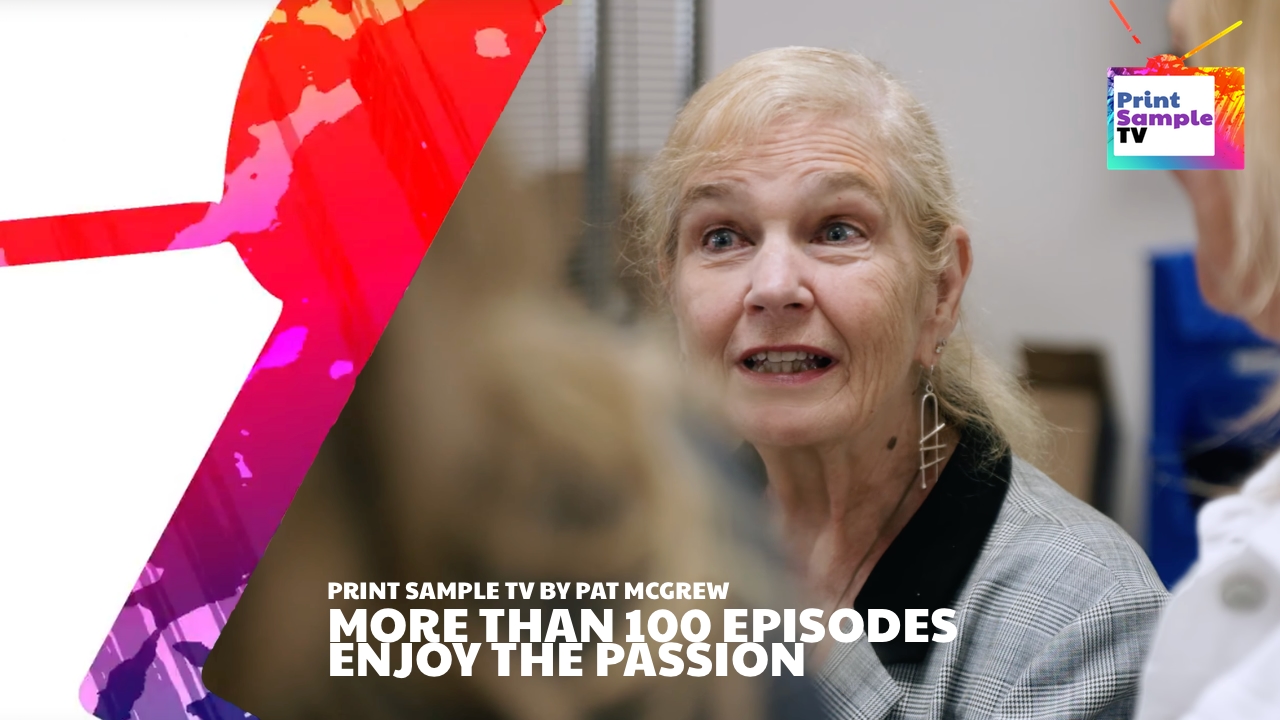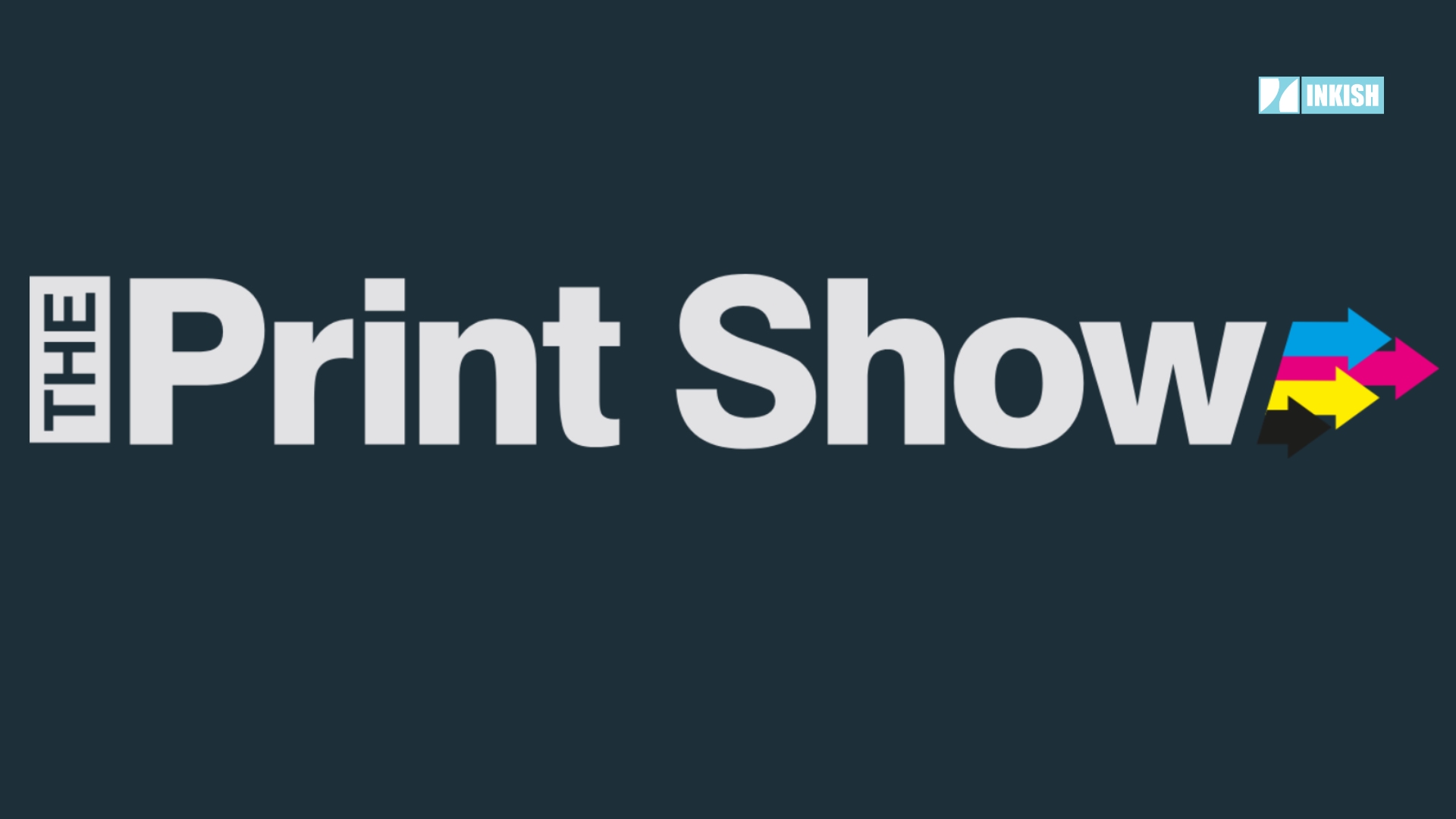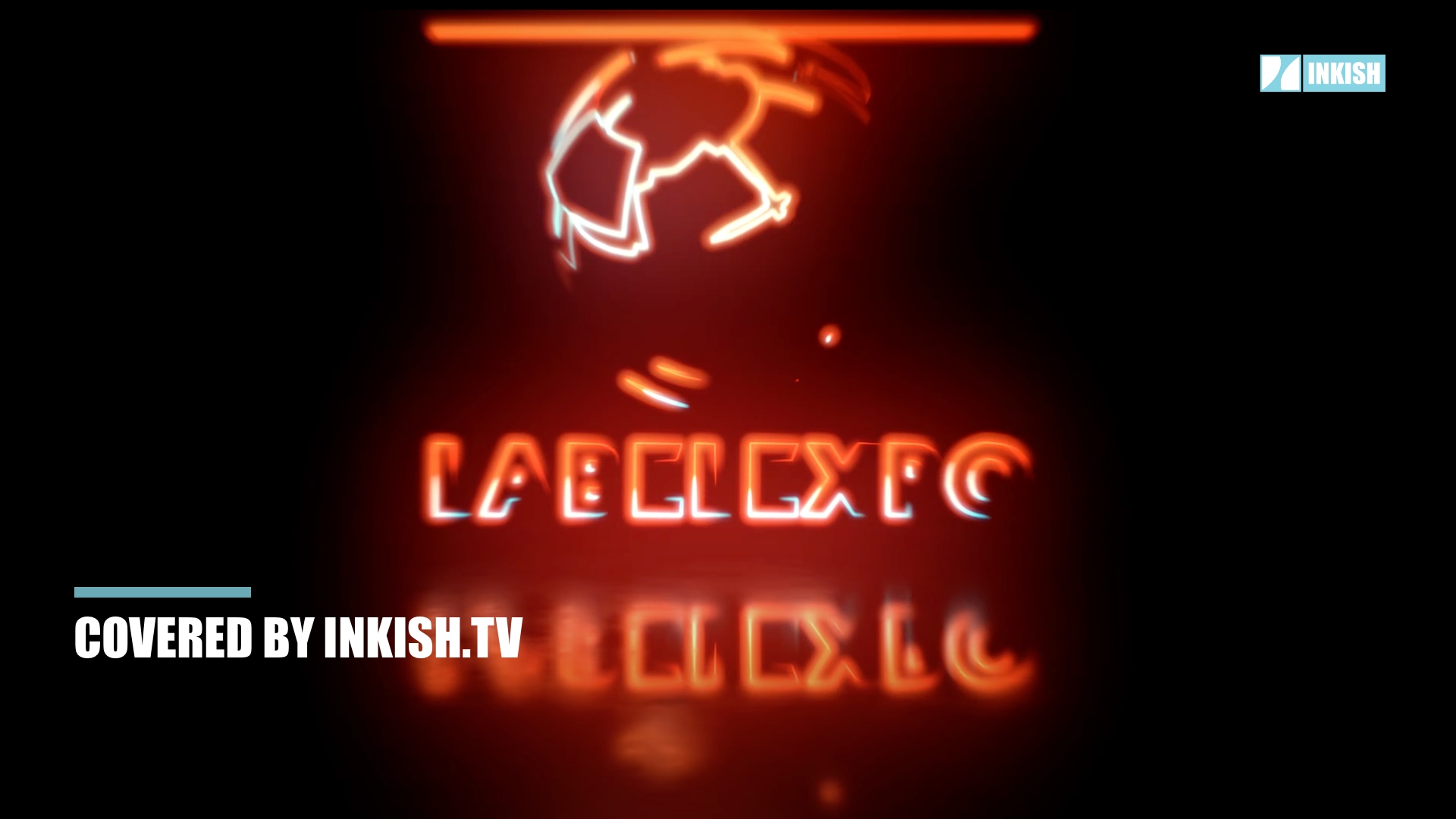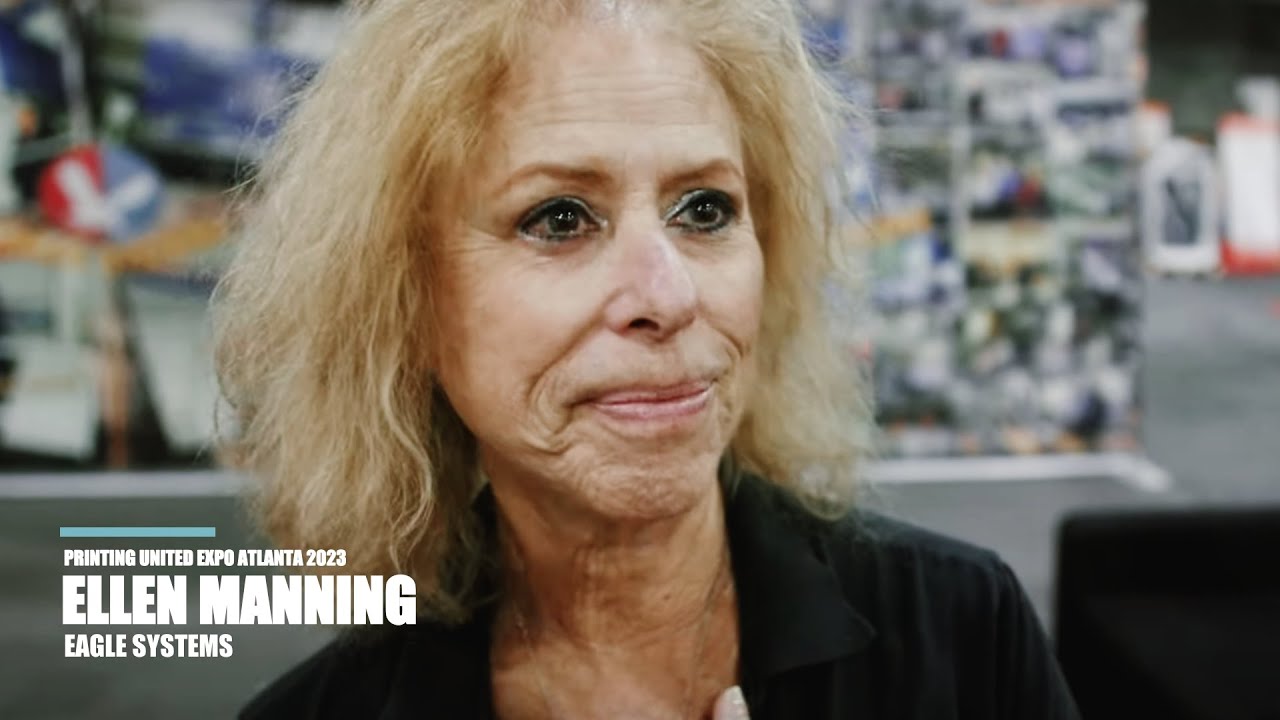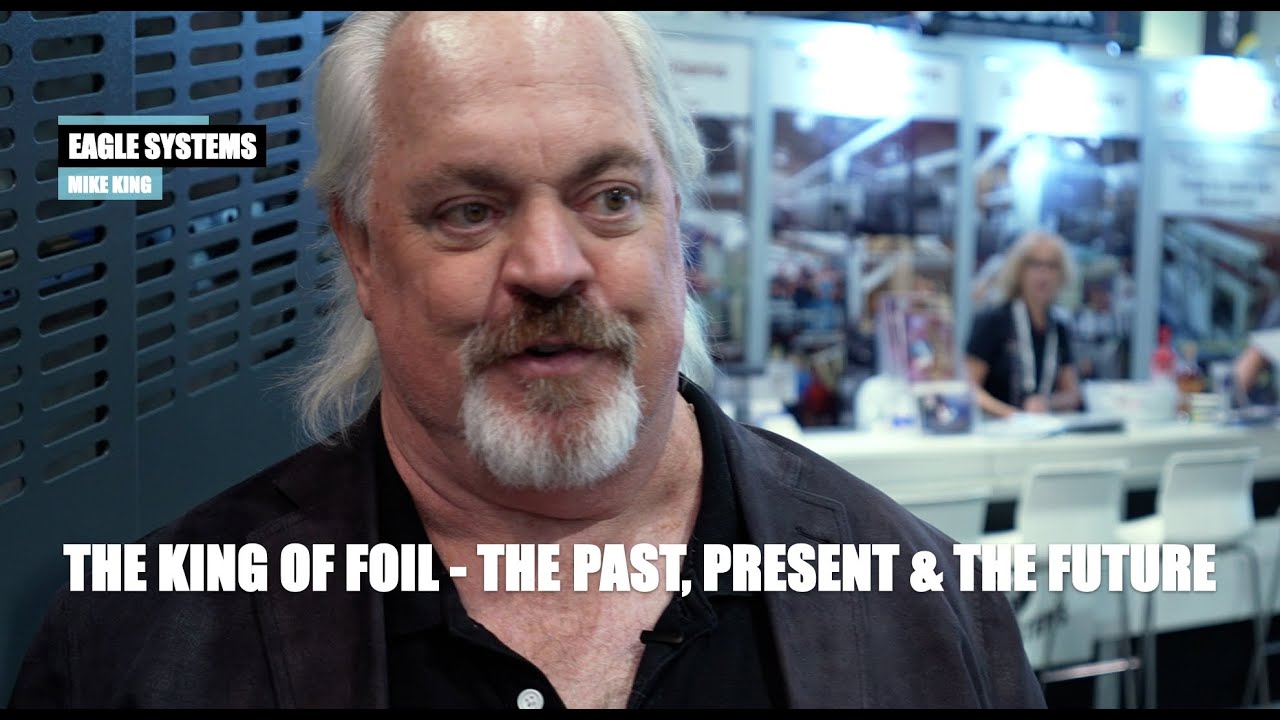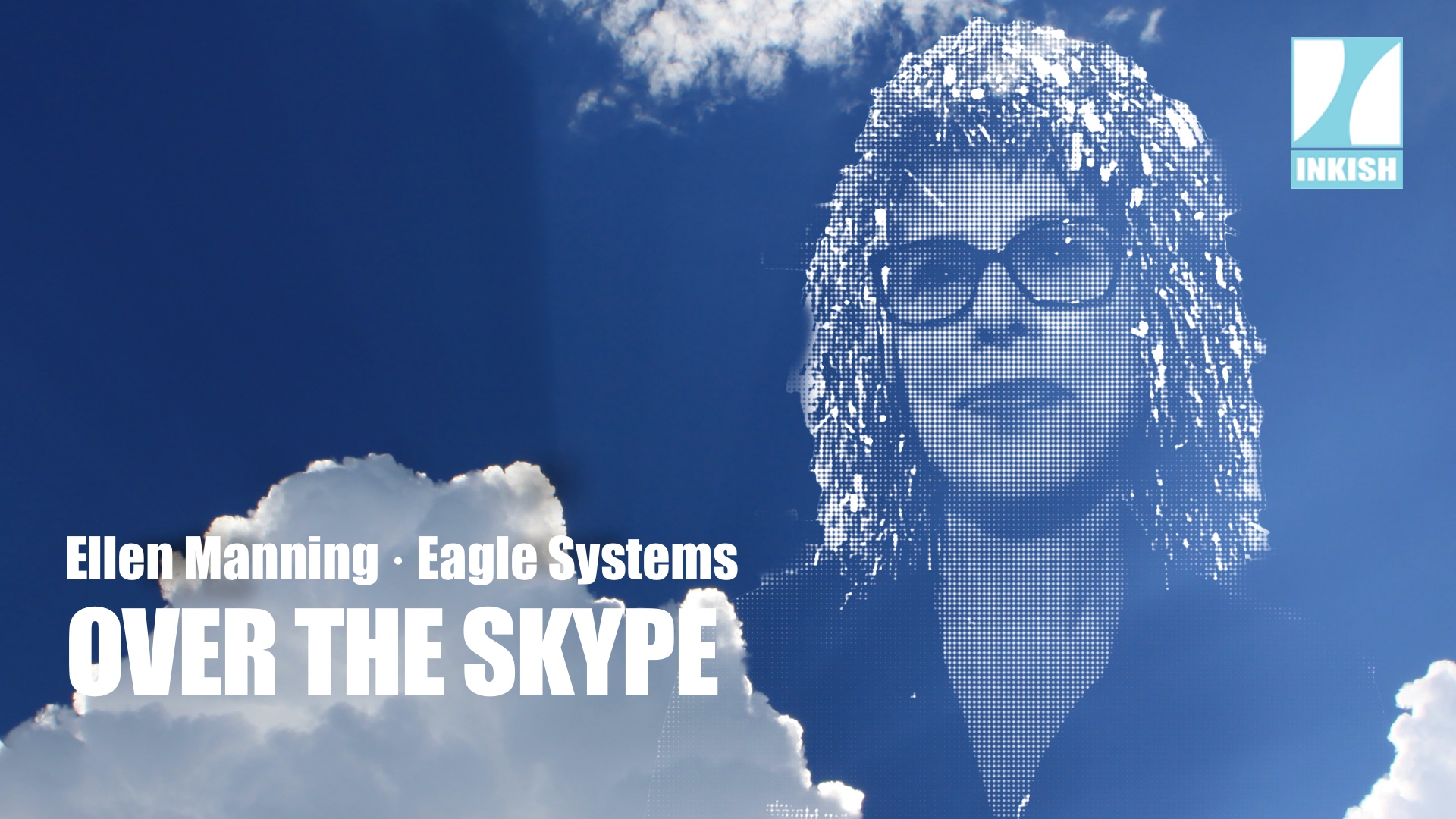Mike King · Over The Skype · Eagle Systems
Whau – what a story. Mike King is the President and CEO of New Jersey-based Eagle Systems. In this, Over the Skype episode, he tells how his father and him, worked in New York City, and how the interest for foils eventually became Eagle Systems. With a more than 30+ years knowledge about both hot- and cold-foil, not strange that their website is thefoilexperts.com.
As with all our ‘Over the Skype’ interviews, quality is limited to bandwidth, web-cams, and ability to literally LIVE mix the conversations. However, it works, and with Over the Skype, we will bring you more than 20 exciting people, and angles on the industry as it is right now.
Enjoy!
This is a Morten from Inkish.TV and I’m here in my living room in Denmark still because of the Corona virus. But that doesn’t mean that you can’t go out and meet people. It’s just in a virtual place instead of a real place. And I had the pleasure that I am for the first time ever talking to Mike King from Eagle Systems in New Jersey in the US. So Mike, why don’t you spend a little time on introducing yourself and what Eagle System does.
Well, thank you very much sir. I appreciate your time today. And Eagle systems, what we do is, we manufacture hot foil machines and cold foil machines. The hot foil machines, we’ve been doing this now for 30 years. My history is 45 years with hot foil machines. I started back at a young age of 14 years old working with my father and that’s putting me now at 46 years working with just foil machines.
So I guess that, sorry to interrupt you, so I guess that when you say that you’re the foil expert, that is not kidding. Right?
Well, I didn’t really name myself that, but other folks put that name on me so I’ve stuck with it. It works for the company and so we named ourselves the foil experts.
No, that’s super. I remember, I’m sorry to interrupt you, because I want to get more about your story, but I remember the first time I saw your company at some of the graph expos and print shows. It was so fantastic to see all the things that you do because I think that you have a certain specialty that is very special for ecofoiler and maybe we’ll talk about that a little bit later. You see these big machines that you, at least the cold foil machines, is something that you put on top of, typically, a printing machine, isn’t it?
Yes, that’s correct. And just to back up just a little bit-
Yeah, fine.
That’s where we started. We started off with the hot foil and what I did was I invented the very first hop wheel indexing machine many, many years ago at a very young age. It was the first electronic oil puller, actually a foil indexer, that went onto a Bobst-style press. Well, actually, it was a Bobst press up in New York City, and that was a very young age. Since then, I’ve retrofitted over 450 machines on Bobst-style presses, 90% bops in the last 45 years.
Okay, so you would even say that you are a Bobst expert as well?
The Bobst machine is a fabulous machine. We actually used to rebuild the Bobst machines and retrofit them. In the 90s we actually had a partnership with Bobst where they would buy machines from Eagle and we would retrofit their machines. That started around 1995 with a contract of approximately 20 machines a year.
Wow.
It was a great time for Eagle. We were growing rapidly in the 90s. And then, with the turn of events and things changing, approximately 12-13 years ago, I was pulled into the cold foil market. I was a little bit standoffish to be honest with you, because my world was hop oil and don’t touch my world, and cold foil can never be that good.
You had to prove them different, right?
Well, I proved myself different. I was one of those people that pushed back on cold foil and said, this is garbage, this will never work.
But I have to say back then the quality of cold foil was not there. And the folks who were selling cold foil machines, they didn’t put any effort, or any R and D into the actual process. And that’s the difference between my company and a lot of different companies is we spend a ton of money on R and D. First, we did it on hop oil and now we do it on cold foil. We regularly do a lot of testing at different sites. We have R and D days at major packaging houses. We’ve done it at Multi Packaging Solutions. We’ve done at JohnsByrne, McLean packaging, all these folks here, they opened the doors to us. Mars packaging, Clara Monday. I don’t know if you recognize that name.
Yeah, yeah, of course. Yep. Yep.
And they’re fun dates for me.
Mike, when you realized that you had to also go into the cold foil and being in Hartford for so many years, why? Maybe I’m an unexperienced, but tell me a little bit why was there a need for going into cold foil and what are the challenges in making sure that it looks great?
Well, my first look at the cold foil was actually at Multi Packaging Solutions. They had a system that they had purchased years ago and it was one of the first on the market and they were struggling with it and it had broken down and they asked me to come in and repair it. They said, you know foil, Mike, so you can fix it. I had no experience of cold foil, no experience with that market at all. And I looked at the quality, and I said, “This is not good stuff.” I don’t want to say it on the interview, my real feelings.
However, I looked at it and I said, the way people are doing this is not the right way because of the quality of foil and because the structure of the foil, how it’s made. When you look at hot foil, it’s very strong.
When you look at cold foil, it’s on the carrier, but it has to just come off very easily in order to produce a good product. When you have it made like that, it’s very, very weak, not very strong, onto the carrier. So that creates a different type of issue for foil.
So would you say that in the beginning, it was simply the fact of the physics and how things were supposed to work that that was the reason for the bad quality of the output?
I would say in the beginning there was not enough. There was only one foil company. There was only one adhesive company. There was only one blanket being used. There was nothing being done as far as the process itself. And I looked at it and I love a challenge. It’s just been my nature all my life. You know, as far as somebody says, ‘Hey Mike, I want to do foil and this is how I want to do it. I want to put it on this product or that product.” That’s been my life.
When I looked at the cold foil side, I didn’t look at it the way the people that were actually doing it. I looked at it from a different perspective, my own perspective. I’m looking at it from an inventor or an engineer’s perspective; somebody who’s like, “Okay, I know I can get here, but I have to do this and this to get there.” We’ve done a lot of work where today cold foil realistically has a bigger market than hot foil ever had. Okay? It’s already grown past it, I know that. I know that from the volumes that the foil companies are doing. I know that from my volumes. In the beginning it was everybody had a mentality of cold foil’s going to replace hot foil, And that’s the only reason you would buy it. But the quality’s not there, so why would I buy that?
Today, that’s not the case. hot foil still has its market. Met Poly still has a market, and cold foil definitely has its own market. The differences between the other foil processes; hot foil and Met Poly… You understand Met Poly?
Yeah, yeah, yeah.
That’s laminated board. Okay. The laminated board, that has its own market, but it has a plastic. And people are steering away from that. A hot foil is really for solids, not much fine lines. Okay. And you can do anything you want to do in a solid. Our gloss levels today, we’ve run testing on different processes that we’ve developed now, and back in the day our gloss levels were 350, 400. Today we took a hot foil sample… Again, I’m not downing hot foil because I am still hot foil.
Yes, you are sir.
We have a 650 gloss level. And then when we did the test again with cold foil, we’re meeting those same numbers, 640, 650. With the foils today with the process today we’re there. But the beauty on the cold foil side, you could do everything that you’ve done in hot foil. You could do everything you do in Met Poly, and you have your own market with cold foil. A lot bigger than those other two markets. And it’s growing rapidly.
And if you look at from an operational perspective, if you look at the cost of working with the two technologies, is there a difference in that perspective, as well?
There’s a major difference. My customers opened my eyes to that side of it. Again, I’m more of the engineering/inventor side. Yes, I am the President/CEO of the company, but I do learn by my mistakes and I also do learn by other business owners and so when I get together with them and they tell me, “You know Michael, I paid off this machine in 30 days.” I’m like, “What are you talking about?” I’ve had people tell me they’ve paid the machine off in 30 days on one job.
Wow.
In the very early stages, it was actually easier to do it then than it is now because as you go on with it, it becomes more competitive. But I’ve had other companies, there was one company in Florida that does one job and they had it paid off in 90 days and it was originally done in a hot foil format and it’s a job we all see on the shelf out there today. It’s still being run every day on cold foil, but it was a big solid and then they would do an overprint on it. Well that’s the perfect job for cold foil.
Yeah, because that is literally impossible with hot foil, isn’t it, to do the oil prints?
Well, it’s not impossible because I taught that for years. But the difference is, you have to make a couple extra steps on the hot foil side. On the hot foil side, you have to literally put the foil down first and then overprint on top of it. Okay? When you go to overprint on top of a hot foil product, if you think about it, you push an impression into the sheet. That impression flattens out the actual grain of the sheet, and pushes it down into the sheet. Well, years ago, people who did make ready in hot foil, when you did flat stamping, that we call the flat stamping, it was flat. There was no indentation, there was no deboss.
So that was why it was easier to do the reprints on it because with the blankets and the cylinders and everything like that, you could actually be on level with the paper or the substrate?
Correct. And the problem is if you have too deep, you can’t get the ink to go into those corners. If you think about it, because there’s only a blanket running by with your image.
Yeah.
That make-ready on the hot foil side has to be perfect. Then you have to come back into the other side of the process and go back into the printing press and now you have to align your print to hot foil stamping, which now you’re taking two different types of machines. You’re taking a machine that moves the sheet and stops, moves the sheet and stops. Okay? So you have registration issues. As opposed to a printing press that goes through the press up and down.
Yeah, yeah, yeah. Precisely. So you had the continuous, yeah, precisely.
Okay, so obviously the technology had differences and what you say is that the cost cold foil, that actually is a business opportunity as well, because people that are using hot foil as a technology, cold foil with the quality and the capabilities of the technology today is on par with the look and feel of the cold foil, but it’s less expensive to actually produce. Is that a correct assumption?
Well, it is to a certain amount. Okay. For example, the smaller the job in hot foil or should I say the smaller the job in cold foil, the more economical it becomes because your die costs, your make-ready times, and your actual runtime of the actual hot foil job. So, literally, any job under 20-30,000 sheets is a hands-down winner on cold foil. Even if you’re just doing a small area.
It’s just that when you get up to the higher volumes, you might spend a little bit more money on the foil itself.
Yeah.
But you have to look at the whole picture. So example, let’s say a 10,000 sheet run, make-ready, everything, in cold foil. If you’re really good at it, it’s a one-hour job and that job goes right to your finishing department into die cutting.
Take the same job. If it’s eight-up and tight registration, well, that same job could take four hours to make-ready. You might chase your make-ready a little bit. You might run it 2,500 an hour. By the time you get done, it’s nine hours on top of the original print time. That’s money.
That makes sense. Yeah, that makes sense. Yeah. So Mike, I interrupted you when you started telling me a little bit about your story because you work together with your father in Eagle or how? How did you get started into this business?
Well, my father had started off working for a printing company that made beer coasters. And he was a printer. As a printer there, a gentleman came in who was a company that did repair on machinery, and his name was Herman Meidig. Herman Meidig was an old German man that actually taught me a lot in machining. He took my father and another gentleman under his wing and said, “Hey, I want you to come work for me as mechanics.”
So, and it started off as that type of a company where they were repairing Kluge, CMPs, Thompson, small printing presses. And they had a machine shop up in New York City, Mott street. Right in little Italy. That’s where I started, Little Italy, New York.
Okay. And when you started there, obviously it was different a time and a different period. And when you got into the foiling business, how did that happen?
Well actually, it started immediately. We had a company called Gain Brothers. Anybody that’s in this industry for a long time knows that name in the States. And Gain Brothers was a distributor for what’s called a Brighton leaf puller.
Okay.
And the Brighton leaf puller was a mechanical foil puller that went on Kluge, CNPs, and Thompson’s. That was the beginning of when I first started working for my father within one year of working there.
So you got into it because of a supplier that came with something that looked a little bit like foil, and then you had to figure how you could utilize that even better.
Well, actually, I can’t take claim for that one. Actually, what happened was somebody came to us with a design of a foil puller called a Brighton leaf puller and said we need these things mass-produced and you’re a machine shop. So can you produce them? You’re in the printing industry.
So a gentleman came to my Father’s company, and we were producing, I would say, 30 machines per month back then.
Wow.
Only very small, they were only all the way up to 22 inches. They ran on Kluge’s and CNPs. The company was located in Mahwah, New Jersey, and every month we’d have crates about two feet by three feet and packed up and run over to with the pickup truck and drop them off, 10 at a time.
And that business started-
Was that-
Kind of fun installing them.
Okay. So you started installing them as well?
Yeah. The same company came to us and said, “Well, locally, can you install these things?” You know, they had other people installing in the rest of the country.
Yeah.
So we started installing them and then I got a taste of what foil was about and that’s when I decided to make the first electronic foil puller.
Hmm. And that was the starting point for Eagle as we know it today, basically.
No, that company was Herman Meidig.
That was Herman Meidig.
The Meidig machine. Yep. And my father retired in 1990 and that’s when I started Eagle.
Okay. And with Eagle, as I said, when I met you as a company in a trade show, I think is it your wife that is always dressed up with the foils in her hair and things like that? Or is that just somebody who works with you?
No, that’s Ellen. That’s my better half.
Your better half.
She makes me look good all the time. We’re not married but-
okay. Yeah, but better half anyway.
My better half.
Yeah. Okay.
She’s the Senior Vice-President of the company, she’s my partner. She does a hell of a job when it comes to marketing, but she loves this industry.
She started in this industry in 2008 and just a quick story about Ellen is she was selling services for large buildings of cleaning companies and services and things like that. And Ellen and I were only together a few years and I said to her, I have this big show in Germany called Drupa. And I said, I just want you to come along. She said, “How long are you going to be gone for?” I said, “Well, at least three weeks.” She said, “Three weeks? Who goes to a show for three weeks?”
I said, “Well listen, I want you to come to the show with me.” So she says, “I don’t even know what you do.” I says, “Well, you come to the show and what we’re going to do is you just need to work the booth and hand out brochures and you know, hand out coffee, and when people come in you just keep them occupied until I could talk to them.” Well, she fell in love with the industry. So we came back from Rupert and she said, “Can I work with you?” I said, “Absolutely.”
And just for the people that don’t know her, when I was referring to it was like I met her the first time at some of Deborah Corn’s Printerverse booth where she was dressed with these wicks made of silver foil or something like that. So she makes a presence when she’s there and she’s a really nice lady so she’s your better half, so I better watch out that she’s doing marketing for you. So I will not be saying anything wrong. Sorry about my…
So, what I like about that story is also the Drupa thing and everything about this and you are, as you said also in the beginning, you are so much driven by passion to both to the printing industry and also to the technology and to being the inventor and getting into new ideas to do that. Would you say that that is what makes Eagle System so special compared to… I guess you have competition, right?
To be honest with you, over the years we’ve done quite well. We’ve had, in the early stages when I first started Eagle, we had about eight or nine competitors in the world. By ’95 we were down to one. We’re not an inexpensive piece of equipment, by no means. We’re a high quality piece of equipment. We’re a tank and we’ve got a team that’s amazing, that are all very focused on foil. Okay? We do a ton of training on all my folks here. We’re mainly a technical company. We’re not a very high administrative company where we have a lot of administrative people. It’s 90% technical people.
Sounds agile in an industry that needs agility, right?
Yeah. We do quite well out there. And even in the cold foil world, people have come and gone in the last, 10-13 years. There were quite a few more a few years back, but most of them have gone by the wayside. Again. We’re not an expensive company by no means, but we’re not inexpensive either. We’re priced just right. I don’t want to get into that side of it really.
No, no, no, that’s fine. I don’t want to hear it anyway. So don’t worry.
I like more of the technical side. I really enjoy what I do. So, that’s really everything. I could go on for hours with this telling you my history with-
I’m sure. It’s fine. I have plenty of time, but it’s also sometimes a matter whether people want to see a film that last too long, right? But I have a few questions because two things that come to mind that I’m curious about. One thing, and let’s start with that part of it, if you look at foil in relation to environmental programs and increased focus on environmental issues, how is foil in that perspective?
Well, there was a test done years ago by a company called Pyra, and Pyra did a test. On the hot foil, when they did the test on a 28 by 40 inch sheet, the parts per million were 1000 parts per million, which is really irrelevant too, and that becomes green friendly.
Okay.
Because there’s nothing left there.
Okay.
Okay? And then when they did the same test on cold foil, it was, if I remember the number, it was about 83 parts per million.
Okay.
So that’s even lower yet. So as far as being green friendly and repulpable, yes it is.
Okay. So that means that when brand owners and people that are looking into making their packages and their magazine covers and all things look better and stick out to the audience that needs to invest in it, foil is a very viable way to go in that perspective as well.
Oh absolutely. Absolutely. There’s been a lot of research over the years for that and we’re working very closely right now with the foil stamping and embossing association. I don’t know if you know Jeff over there?
I don’t know him.
And they’re putting together a program right now, an outside service, to actually run some more testing to show how viable foil really is. They’re adding sparkle to that package and making it, added value without having to worry about the environment. The other side of it too is, over the years people were concerned not only with the plastic side of it, but also the actual chemicals that go along with it.
So cold foil, the chemistry, we have low migration adhesives today, which we didn’t have 10 years ago. And that’s great for Nestle’s, Ferrero Rocher, Godiva, all these chocolate companies who are concerned about chemicals going into their chocolate, don’t have to worry about it because we have low migration products and the same thing goes for the cigarette market. They’re worried about migration. I think it should be a different fear. But however, that’s my opinion. But I quit smoking 32 years.
So you’re allowed to say so, Mike, that’s no problem. I don’t smoke either. So we just agree that foils on secrets doesn’t hurt the secret, at least.
Exactly. So you don’t have to worry about the chemicals going into the cigarette. But I don’t know what chemicals come out of that cigarette, but don’t worry about them going if we got that covered.
That’s great. Wow, that’s good.
And Mike, another thing that I know a lot of people are, of course, thinking about is that everybody talks about all these new words like “mass customization, and variable data, and going digital” with everything. I also think that some companies like Scodix and MTI and some of the electronic digital printing companies are doing digital versions of some of the things that you are doing. What is your opinion about that?
My opinion on the digital is quite different from some folks and even speaking when a lot of my customers/partners, they feel the same way as far as the digital world. Yes, there’s a place for it. Is it in the packaging world? We don’t believe so because the volumes are so big.
You know, you take variable data, it’s just like years ago HP did that whole thing about Coke and all the names on the cans. Well you know, to me, everybody’s not looking for the names all over everything. In the mailing world, yes, I agree with that. On commercial prints, maybe personalizing a car brochure or something that you’re getting in the mail. I agree with that. But the packaging world, we’ve had one company was doing out-of-box and you know out-of-box has the protecting cover for your phone.
Yeah. Well on the outside of it, they did a nice job with raindrops showing that, this could protect your phone if it rains. So it looked nice, it was done with a Scodix machine. Well the company that had that project came to me and said, “Mike, we’ve got to do it a different way.” I said, “Why?” He said, “Well, the volumes, I’d have to buy 15 Scodix machines. I’d be running this for the rest of my life.”
Just to keep up to speed. Yeah, yeah.
Just because of the speeds and the volumes.
Yeah.
So we ended up doing it with a coating and accomplishing very close to the same thing.
Yeah. So, your opinion is basically that different markets have different needs and different technologies are better for each of those kinds of jobs that you are supposed to deliver the output for?
Correct. And then the other side of the digital world, and again, just my opinion, is let’s say you’re a printer like JohnsByrne’s or McClean packaging and these large companies that are around the US, and you’re thinking about getting into that digital world and all of a sudden you get in there and now you’re printing. Your average run on that digital machine is a thousand sheets or less where your break even point is.
Now the break even point has been proven over and over again because there’re companies that I see out there, which I can’t mention because I’m under NDA, where they do eight minute make-readies on an eight-color press and they call it a hang and bang shop. Okay? Very high quality end and they’re running thousand-sheet runs. And I say to myself, well, why don’t you have this digital machine that’s perfect for you? And then when they say, well, with the cost of doing the digital, as far as all the extra expenses and the downtime, instead of uptime. Well let’s say uptime on the machine, 50%, 60%. I could never sleep at night if I had machinery like that out there.
No.
But the uptime is ridiculous. However, the logistics side, in my eyes, becomes a nightmare because if you’re a company that does the average job, 10-20,000 sheets. And now you’re looking for that thousand-sheet run just to fill that machine that you just bought. Well, how many more thousand-sheet runs do you have to run to pay off that machine? [crosstalk 00:29:30].
Yeah, I think it has a lot to do with different business models because I think that one of the things that I pay a lot of attention to in the market right now is that I think that the diversity of both printers and applications and technologies gives a lot of, I would say, hope for a stronger industry in the future. We don’t know each other very well, but I could tell you I’m one of the few people that really believe in growth in the printing industry. Even for commercial print. And I think it comes down to the fact that we can produce things that have a higher value like yourself, you’re in the business where you add value, a lot of value, to the paper and the packaging. I think that if people started understanding that we don’t need to de-commoditize everything, and we don’t need to only focus on price but maybe rather on value, I think that could be so fantastic if we could do that. So with these words, we have talk now for 30 minutes. Mike, it’s been a pleasure.
I hope to see you in real person at a trade show near you soon. Are you going to Printer United?
We haven’t made plans for it yet, obviously because of what’s going on right now, but most likely we will. Hopefully we’ll see you there.
If you’re out there, I’m there, because we are working together with Printer United to get the message across.
I will, for sure, look you up if you’re there. I appreciate the time and thank you very much for giving an insight in Eagle System. I think it was a really interesting, so once again, thank you very much, Mike.
Thank you my friend.




















